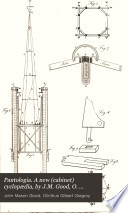 | William Bingley - Animal behavior - 1803 - 624 pages
...forth also at different times. After having deposited the eggs they scratch the hole up with sand, and leave them to be hatched by the heat of the sun, which is generally done in about three weeks. The eggs are about the size of a tennis-ball, round,... | |
 | Christoph Christian Sturm - Calendars - 1808 - 314 pages
...find a sufficient subsistence. Amphibious animals, quitting the water, lay their eggs in the sand, and leave them to be hatched by the heat of the sun, as though they knew that their young would of themselves find the way to their proper element, and... | |
 | John Mason Good - 1819 - 742 pages
...different times also. When they have laid their com* plement of eggs, they fill the hole with sand, and leave them to be hatched by the heat of the sun, which is usually performed in about three weeks. It may be proper to add, that the eggs are about the... | |
 | William Bingley - Commercial products - 1821 - 298 pages
...there devour them. The females deposit their eggs, from eighty to a hundred in number, in the sand, and leave them to be hatched by the heat of the sun. These animals are found among rocks, or in woods, in several parts of India and America, In Surinam,... | |
 | 1824 - 452 pages
...at different times also. When they have laid the complement of eggs, they fill the hole with sand, and leave them to be hatched by the heat of the sun, which is usually performed in about three weeks. It may be proper to add, that the eggs are about the... | |
 | William Bingley - 1831 - 298 pages
...females deposit their eggs, GUANA — SERPENTS. 183 from eighty to a hundred in number, in the sand, and leave them to be hatched by the heat of the sun. 198. The GUANA (Lacerta iguana, Fig. 55) is a specie* of lizard, four or five feet in length, which... | |
 | William Smellie - Anamals - 1832 - 348 pages
...deposit their eggs, and hatch them by the heat of their own bodies. Some few lay them upon the sand, and leave them to be hatched by the heat of the sun. Their care and affection for their young are well known, and, in providing for and protecting them,... | |
 | William Pinnock - Encyclopedias and dictionaries - 1833 - 738 pages
...That is at the breeding time ; and the females lay their eggs in holes in the sand, eorer lern up, and leave them to be hatched by the heat of the sun. Tie eggs are nearly globular, and from two to three inches in iameter. They are not covered with hard... | |
 | William Martin - Children's literature - 1871 - 388 pages
...alligator lies in its tail, with which, the large ones can easily upset a canoe. They lay their eggs in the mud, and leave them to be hatched by the heat...the spot, and show much affection for their young, many of which fall a prey to the old males, and vultures and fishes. In cold weather these animals... | |
 | Orphan - 1841 - 186 pages
...in water can swim with great facility. They lay their eggs in the sand, in which they cover them up, and leave them to be hatched by the heat of the sun. The Indians kill them for food, part of the tail being esteemed a great delicacy. Their cry is very... | |
| |